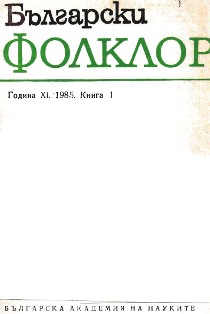Обредни символи и музика
Ritual Symbols and Music
Author(s): Tsenka Yordanova Subject(s): Anthropology
Published by: Институт за етнология и фолклористика с Етнографски музей при БАН
Summary/Abstract: The article underlines the dialectical bond between the structures of symbols and their single concrete manifestations. The formation of meanings in the single realizations of symbol structures in rites is viewed upon as a process, the study of which should be carried out on various levels of analysis. Ritual symbols are bearers of many layers and only part of them is accessible to logical reduction, as it is only part of their “polyphonic” (“multivocal”) structure that comes out of its latent state. Thus every symbol has some explicit meaning, but this meaning is restricted regarding the total number of themes and ideas, and it is apt to change in every concrete context of every concrete use of symbols. Beyond the evident side of the symbol to the ritual “personae” there exists an enormous “penumbra” consisting of vaguely perceptible latent meanings, and it is most probably these vague latent meanings that make people perceive the symbols as if charged with an irresistible mysterious force. Hence the obscurity in principle in the nature of the ritual symbol, which hampers the discoursive means of knowing things: in traditional cultures symbols are perceived in a spontaneous and intuitive way, without analytical reflections, “supraconceptually”, as a sacred force which is not subject to precise interpretation. The sound medium in rites is one of the basic factors for the differentiation and the keep of “multivocality” and the latent forces in the ritual symbol. It creates a specific context in which the symbolic acts are enacted by means of mobilizing different parts of them. Being an especially active component part in the sensorial semantic pole of the symbolic meaning, it is the chief factor for evoking desires and feelings, and, to a great extent, it forms the affective climate. At the same time, however, it has a clear and stable aspect of its own as a symbol, which lies mostly in the possibility to firmly set purely musical notions and ideas. The nature of this controversial feature of the sound medium, in the rite music in particular, presents the subject of the second part of the article.
Journal: Български фолклор
- Issue Year: XI/1985
- Issue No: 1
- Page Range: 17-25
- Page Count: 9
- Language: Bulgarian
- Content File-PDF

